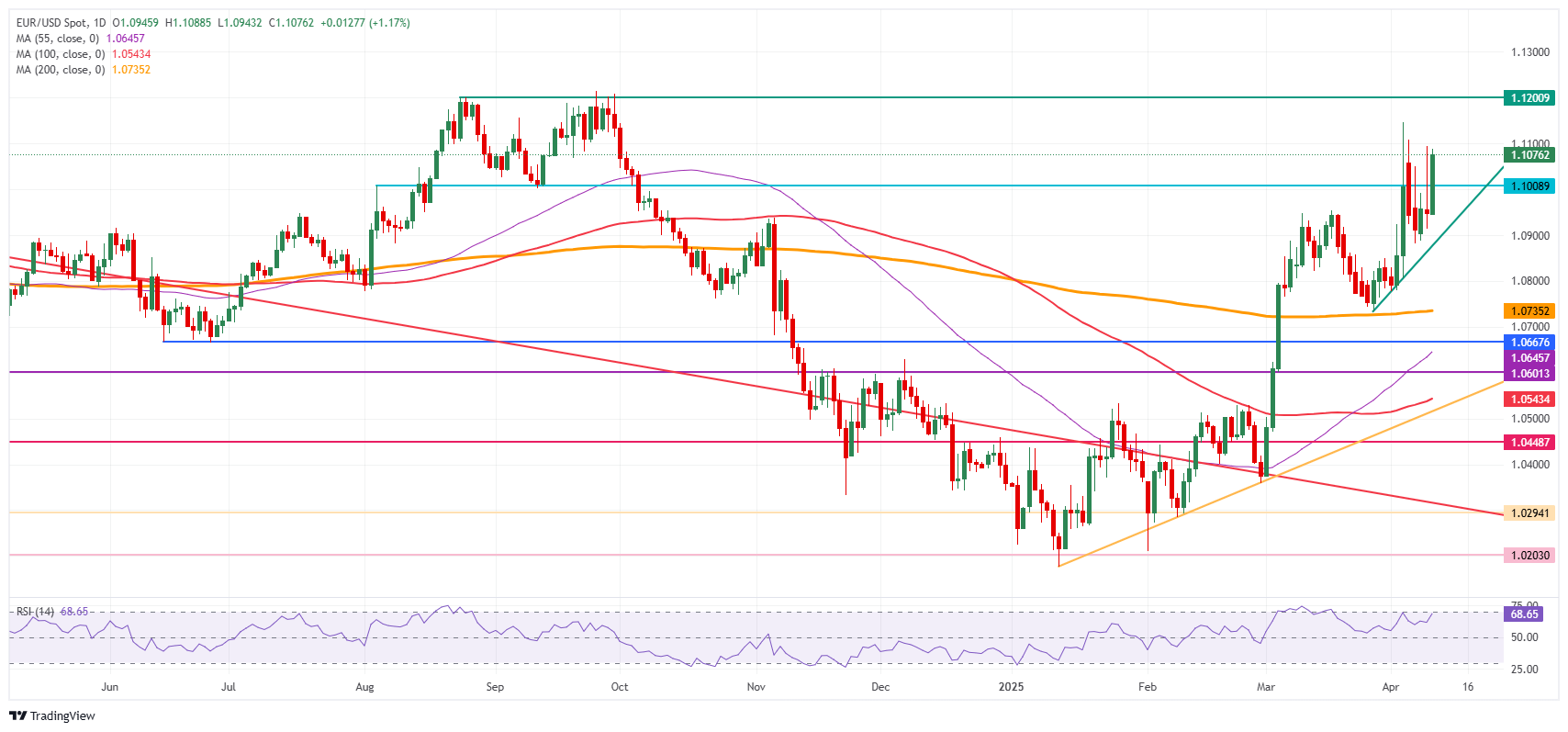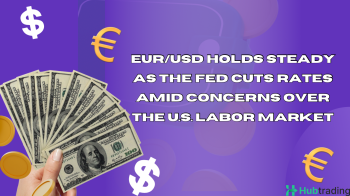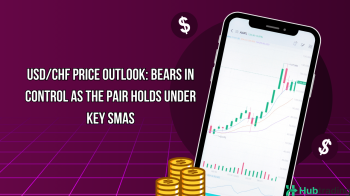-
EUR/USD rebounds above 1.1000 following a volatile U.S. session on Wednesday.
-
Investors await March U.S. CPI data and further developments on tariff news.
-
The pair’s upward momentum remains intact as it re-enters the 1.1000–1.1500 range.
The EUR/USD pair is climbing back toward 1.1050 on Thursday, rebounding from a turbulent Wednesday session that saw sharp swings between 1.1095 and 1.0913. The volatility followed U.S. President Donald Trump’s announcement of a 90-day pause on reciprocal tariffs, temporarily lowering the rate to 10% for all countries.
The decision came amid rising pressure from notable figures like Elon Musk, Bill Ackman, and key Republican leaders, as well as concerning signals from the equity markets. Investors welcomed the move, driving a sharp rally in U.S. stocks, though optimism appears to be fading in Thursday’s pre-market futures.
Key Market Movers: Spotlight on U.S. CPI
- Investor focus has now shifted to the upcoming March U.S. Consumer Price Index (CPI) data, due at 12:30 GMT. Economists expect headline monthly inflation to ease to 0.1% from February’s 0.2%, with the yearly rate declining to 2.6% from 2.8%. Core monthly inflation is seen edging up to 0.3%, while the annual core rate is forecast to slip to 3.0%. Also due are weekly Jobless Claims, expected at 223,000, and Continuing Claims projected to fall to 1.88 million.
- A packed day of Federal Reserve commentary lies ahead, with Dallas Fed President Lorie Logan, Fed Governor Michelle Bowman, Chicago Fed President Austan Goolsbee, and Philadelphia Fed President Patrick Harker all scheduled to speak. These remarks will likely shape investor expectations heading into the next policy meeting.
- Despite Wednesday's relief rally, U.S. futures have turned lower, while European equity markets remain firmly positive, up over 5%. According to the CME FedWatch Tool, the probability of a rate cut in May has fallen to 19.5% from 44.6% earlier in the week. However, markets still price in a 75.3% chance of easing in June. The U.S. 10-year Treasury yield trades around 4.29% as investors search for direction following recent volatility.
Technical Outlook: Support and Resistance Levels
EUR/USD remains highly sensitive to geopolitical developments and inflation expectations. After briefly strengthening the U.S. Dollar, the tariff pause now appears insufficient to sustain Greenback gains. The EUR/USD has reclaimed the crucial 1.1000 psychological level, with upside potential toward 1.1146 (the 2025 year-to-date high), and a longer-term target around 1.1200 — a resistance zone tested in August and September 2024.
On the downside, key support sits at the rising trendline near 1.0910. If broken, further support lies at the 200-day Simple Moving Average (SMA) at 1.0735. Below that, the 1.0667 pivot and the 55-day SMA at 1.0645 are likely to act as backstops.
As inflation data and Fed commentary unfold, the EUR/USD pair could see further volatility — but for now, bullish momentum remains intact.
EUR/USD: Weekly Chart






